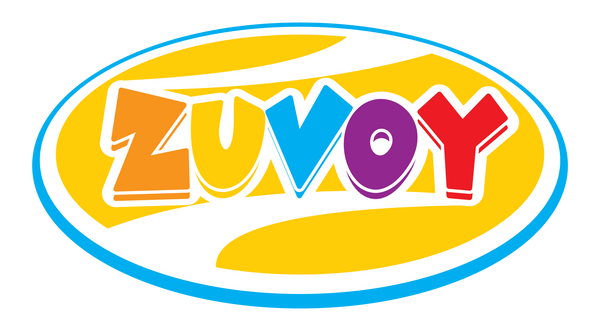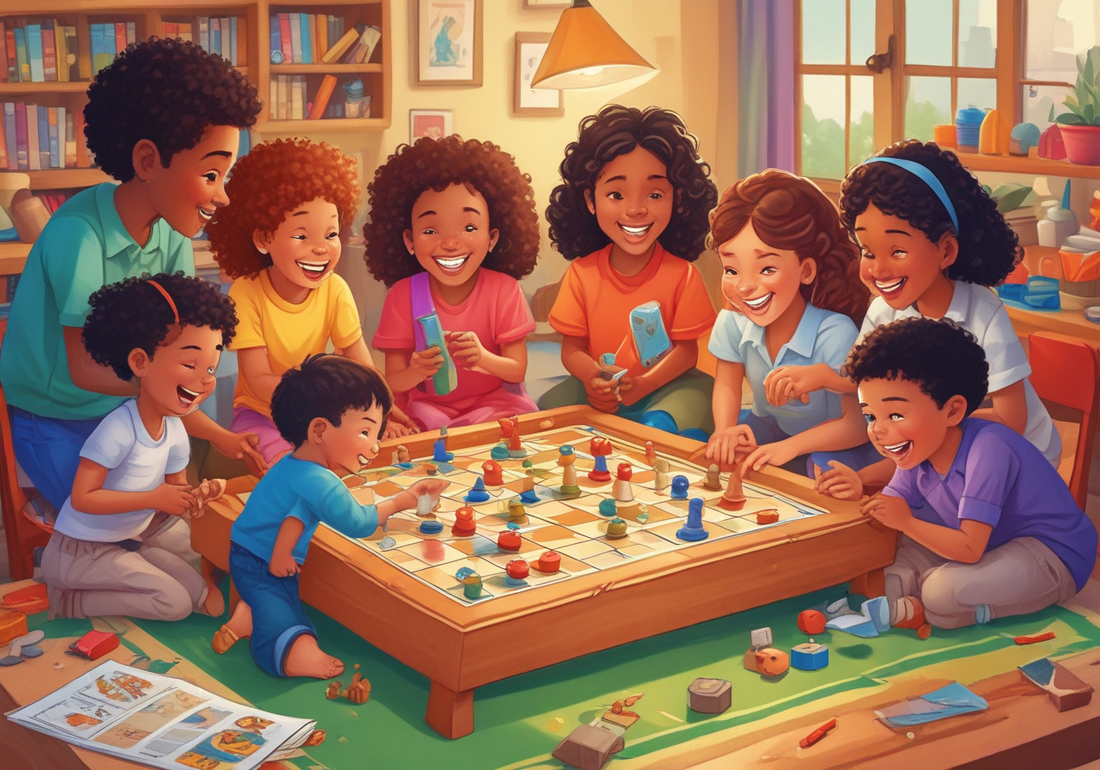Key Highlights
- Strategy board games are a great way to improve children's communication skills and decision-making abilities while having fun.
- These games help develop social skills by encouraging team-based activities and interactive play.
- Playing such games fosters empathy and emotional intelligence, exposing children to different emotions.
- They’re designed with components like a deck of cards, tokens, and interactive tasks promoting teamwork.
- Families can enjoy a variety of games tailored for specific age groups such as Catan and Herd Mentality.
- From setting up the play area to preparing resources, strategy board games are an exciting board game experience for kids and adults alike.
Introduction
Strategy board games for kids are a good way to make playtime enjoyable and educational. These games create different feelings as children get involved in the game. They help build communication skills and emotional awareness. Whether your child wants to be a strategist or just loves working with others, these games promote teamwork and meaningful interactions. As players tackle challenges, they improve their social skills while having fun with family and friends. This guide will help you discover the world of exciting strategy games for kids!
Understanding Strategy Board Games for Kids
 Strategy board games are more than just fun; they help children think critically and make choices. These games include activities that promote logical problem-solving, teamwork, and interactive way moments that build skills and character.
Strategy board games are more than just fun; they help children think critically and make choices. These games include activities that promote logical problem-solving, teamwork, and interactive way moments that build skills and character.
These games are also made for kids of different ages. They range from easy rules for younger kids to more complicated situations for older ones. The flexibility of strategy board games makes them perfect for overall development. This way, kids can bond and learn at the same time while they play.
Importance of Strategy in Children's Development
Introducing strategy games to your children is not just about fun. These games are a great way to build social skills. They encourage kids to work together, share resources, and solve problems through decision-making. The challenges in the games reflect real-life situations. This helps kids understand and manage different emotions in a safe space.
Moreover, these games help kids grow their minds while having fun. Players solve puzzles, set goals, and discuss with each other. This sharpens their interactive way of communicating and builds empathy for others. Making friendships through these activities often leads to stronger connections.
Finally, strategy games teach important lessons about teamwork and emotional understanding. Whether they are playing against each other or working together, kids learn how to make plans and respond thoughtfully to what happens. This overall development not only makes them better players but also gives them skills they need in school and beyond.
Key Components of a Strategy Board Game
The way a strategy board game works is very important. A key part is the deck of cards. These cards often have prompts or scenarios. Players need to respond with logic or creativity. The cards make the game unpredictable, which encourages players to adapt their strategies and stay engaged.
Teamwork is also a major feature in many games. Players often work together, sharing resources or solving puzzles to reach their goals. This teamwork creates a sense of community and prepares us for real-life situations.
Tokens, maps, and action cards bring the game together. They provide physical and visual experiences. For example, games like Floaty Feels show a game of emotional & intelligence. They teach empathy while facing challenges. These elements create various chances for players to interact, making the lessons learned stick in our minds.
Choosing the Right Strategy Board Game
 Choosing the best strategy board game for your kids can be fun but also a bit tricky. You need to think about their age, what they like, and how skilled they are. This ensures the game is fun and helpful. Some games help with social interactions, while others encourage empathy or teamwork.
Choosing the best strategy board game for your kids can be fun but also a bit tricky. You need to think about their age, what they like, and how skilled they are. This ensures the game is fun and helpful. Some games help with social interactions, while others encourage empathy or teamwork.
Pick games that are simple to set up and include fun tasks. For example, try Herd Mentality for larger groups or Floaty Feels for emotional growth. The right game can make family game nights special and full of good learning moments!
Factors to Consider When Selecting a Game
Choosing a game needs some planning to make sure it is fun and educational.
- Age appropriateness: Keep rules simple for younger kids. For older kids, pick games with more complicated mechanics to challenge them.
- Player count: Go for games like Catan for small groups or Herd Mentality for big gatherings.
- Theme: Familiar themes, like those in Floaty Feels, help kids explore emotions. Meanwhile, Ticket to Ride focuses on logical thinking.
- Setup time: Choose games like Alias that don't take long to get ready.
- Replay ability: Pick games like Mycelia that offer different experiences to keep their interest.
In the end, an exciting board game should match your child's interests, which helps them build social skills while having fun.
Recommended Games for Different Age Groups
Finding the right game often depends on matching it to the player’s age group. For younger children, games like 13 Beavers offer fun graphics and simple mechanics with a focus on social interactions. Older kids might enjoy complex games like Catan that promote strategic thinking and reasonable decision-making.
Families with wide age ranges can enjoy universal games like Outsmarted, built to suit all ages while fostering empathy. Games blending SEL tools such as Floaty Feels are great for creating emotional growth over time.
Here’s a breakdown of recommended games:
|
Age Group |
Recommended Game |
Key Features |
|---|---|---|
|
6–99 years |
Floaty Feels |
Emotional Awareness & Problem-Solving |
|
8–12 years |
Blokus |
Abstract Strategy |
|
12+ years |
Catan |
Trading & Resource Management |
|
All ages |
Outsmarted |
Interactive Quiz Game |
These options cater to diverse family needs and provide hours of playful learning!
Setting Up for Your First Game
Preparing for your first strategy board game is exciting! First, collect the important game pieces like cards, tokens, and boards. Make sure each player knows their role and what they need to achieve.
Next, setting up a neat play area can help keep everyone focused and make the game more enjoyable. Choose a spot that is big enough for comfortable seating and free from distractions. A good setup helps everyone get ready for a fun time!
Essential Equipment and Resources Needed
Successful gameplay depends on having the right equipment. For example, games like Floaty Feels need things like action cards and tokens. They also require a strong game of emotional & intelligence system to help make better choices.
Resources should have clear instructions that make learning easier. Creating cheat sheets or simple guides can save time and keep the fun alive.
Also, make sure the tools support self-expression and interaction. You can do this with a creative deck of cards for exploring different emotions. This turns the game into a social and educational experience that builds kids’ emotional strength.
Preparing the Play Area
An organized play area can make a game more fun. Set up the seating in a circle so players can face each other. This helps them talk and build social skills.
Make sure the table or floor is big enough for the game of emotional & intelligence. Lay out the tokens, boards, and cards to keep the game running smoothly.
Create a welcoming atmosphere with few distractions. You can use soft lighting or play background music for certain themed games. This careful planning helps kids enjoy themselves and develop skills together.
Step-by-Step Guide to Playing Strategy Board Games
Are you ready to get started? First, explain the rules and goals to all players. Make sure the game is easy to understand and fun. Next, talk about different strategies to get everyone excited about playing.
As players think about their moves and engage in social interactions, each turn will offer a chance to learn while having a good time.
Step 1: Understanding the Rules
Understanding the basics is a great way to begin. Players need to learn how turns work, how to read cards, and what the winning conditions are.
Help kids by connecting the rules to themes they know. Games that show different feelings can help them understand emotions better.
Pick instructions that focus on teamwork. This will improve their skills in working together while also helping them stay focused.
Step 2: Strategizing Your Moves
To use strategy, begin by looking at the situation for each turn. Teach kids to weigh risks and rewards before they act. Games like Outsmarted help improve this way of thinking.
Work with others during decision-making to highlight social interactions and create a supportive environment for group success.
Lastly, teamwork tasks help improve group problem-solving while also supporting emotional growth and clear thinking.
Conclusion
In conclusion, strategy board games are a great way to help children improve their critical thinking and problem-solving skills. By knowing the important parts and picking games that are right for their age, you can create a fun and exciting place to learn. Getting ready for your first game and using a step-by-step guide will make it easier to start the game. This will ensure that both kids and adults have fun while playing. As you begin this journey of playing strategically, remember that these games provide entertainment and help with your child's mental growth. If you want to make your family game nights better, get a free consultation with us to find the best strategy board games for your kids!
Frequently Asked Questions
What is the ideal age to start playing strategy board games?
Kids as young as six can enjoy strategy board games like Floaty Feels. These games include different emotions and fun storytelling that help boost SEL and social skills. Through easy tasks, they learn teamwork and empathy, getting ready for tougher games in the future.
How can strategy board games improve a child's cognitive skills?
Strategy games help improve thinking and memory. They present challenges that require communication skills and teamwork. Activities that emphasize social interactions teach children how to solve problems and understand the importance of a game of emotional & intelligence. These games also help kids learn patience while they enjoy an exciting board game.

